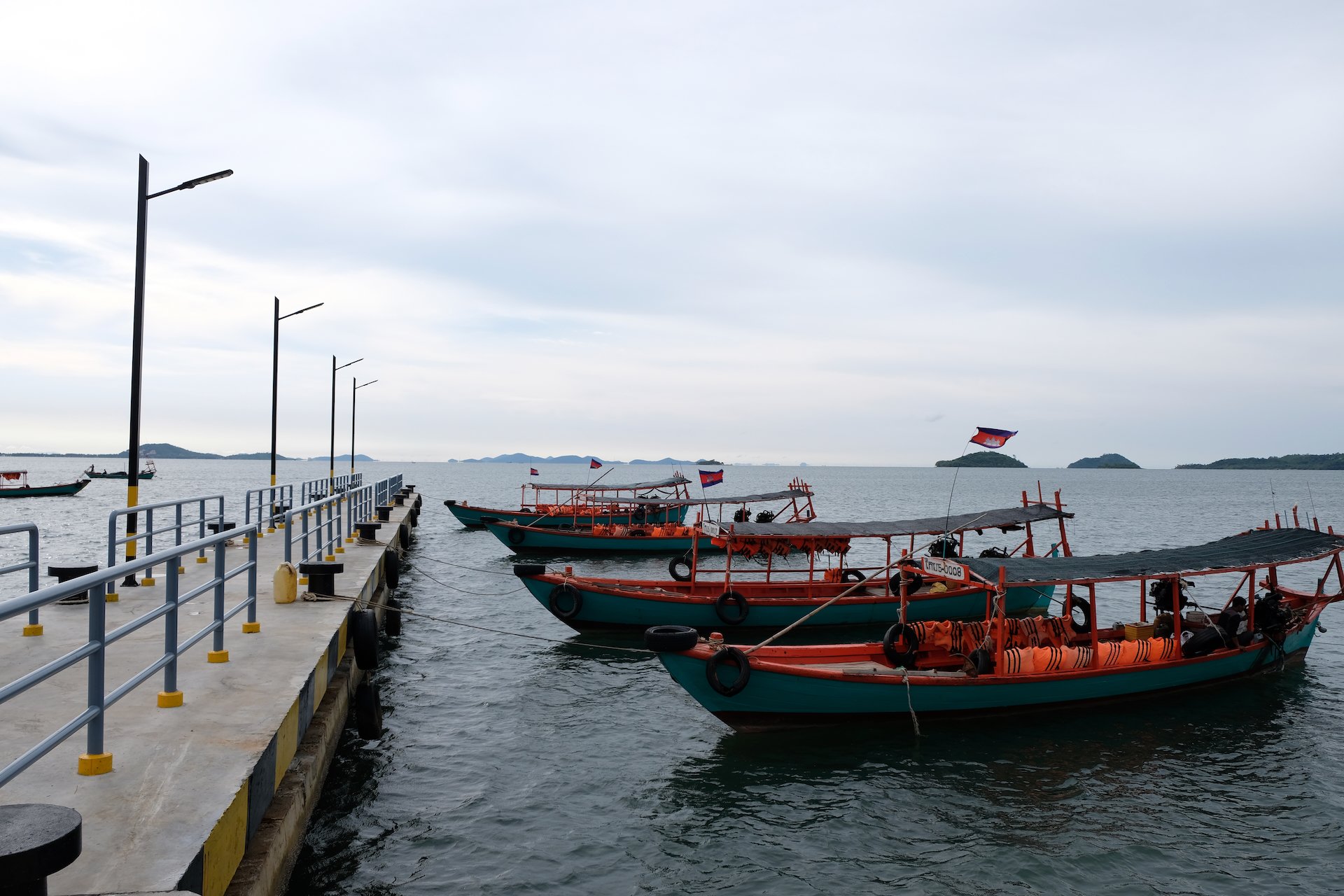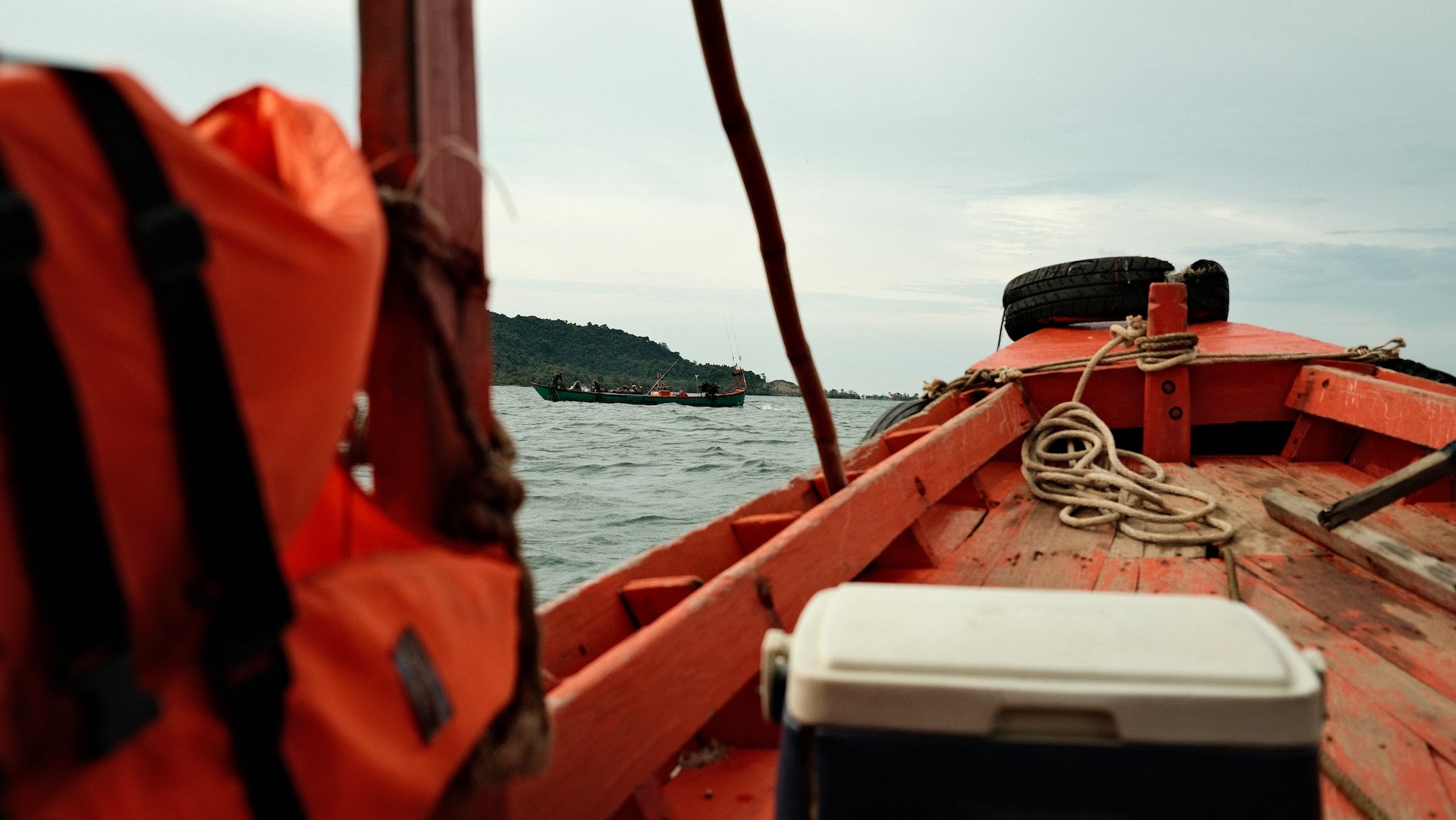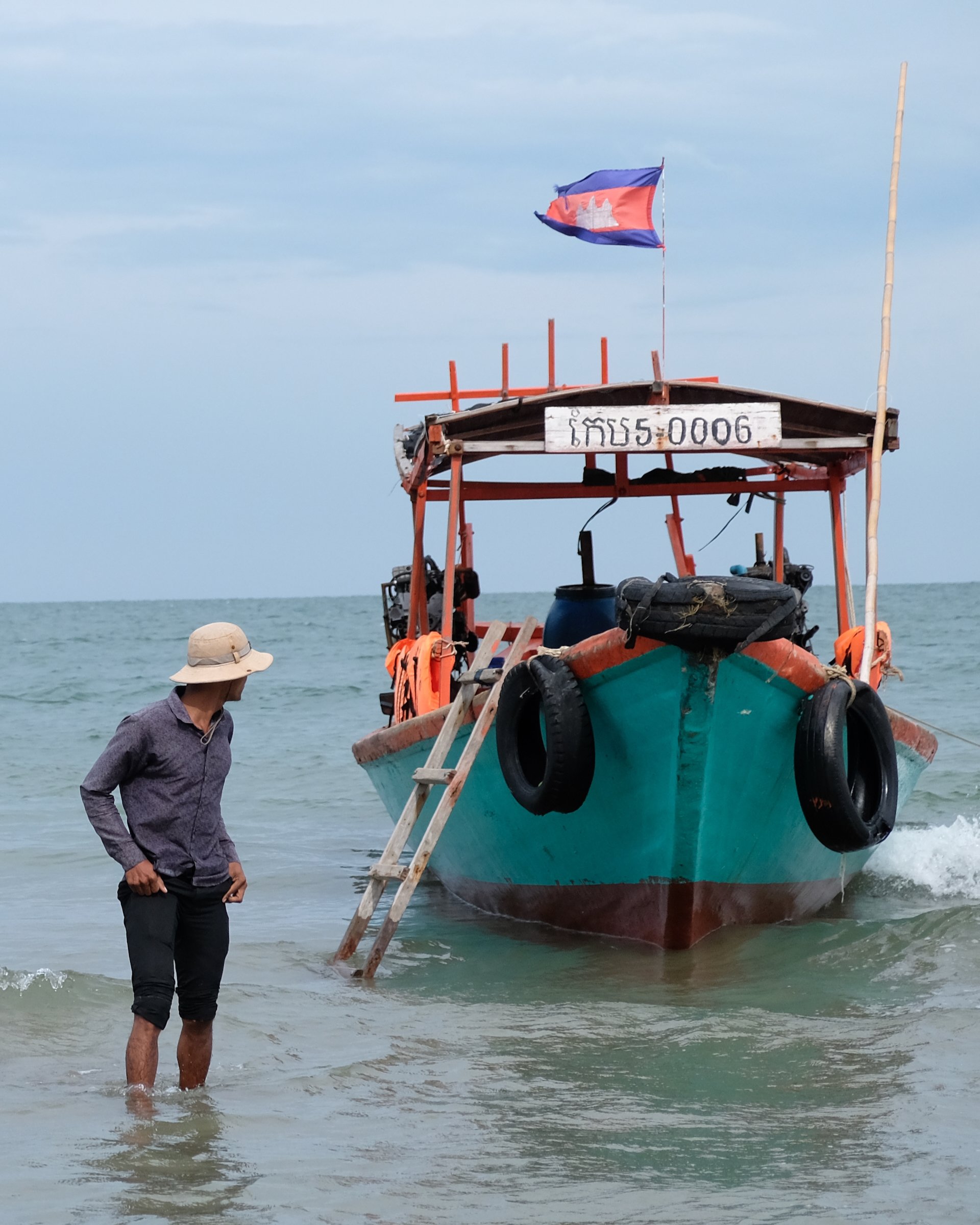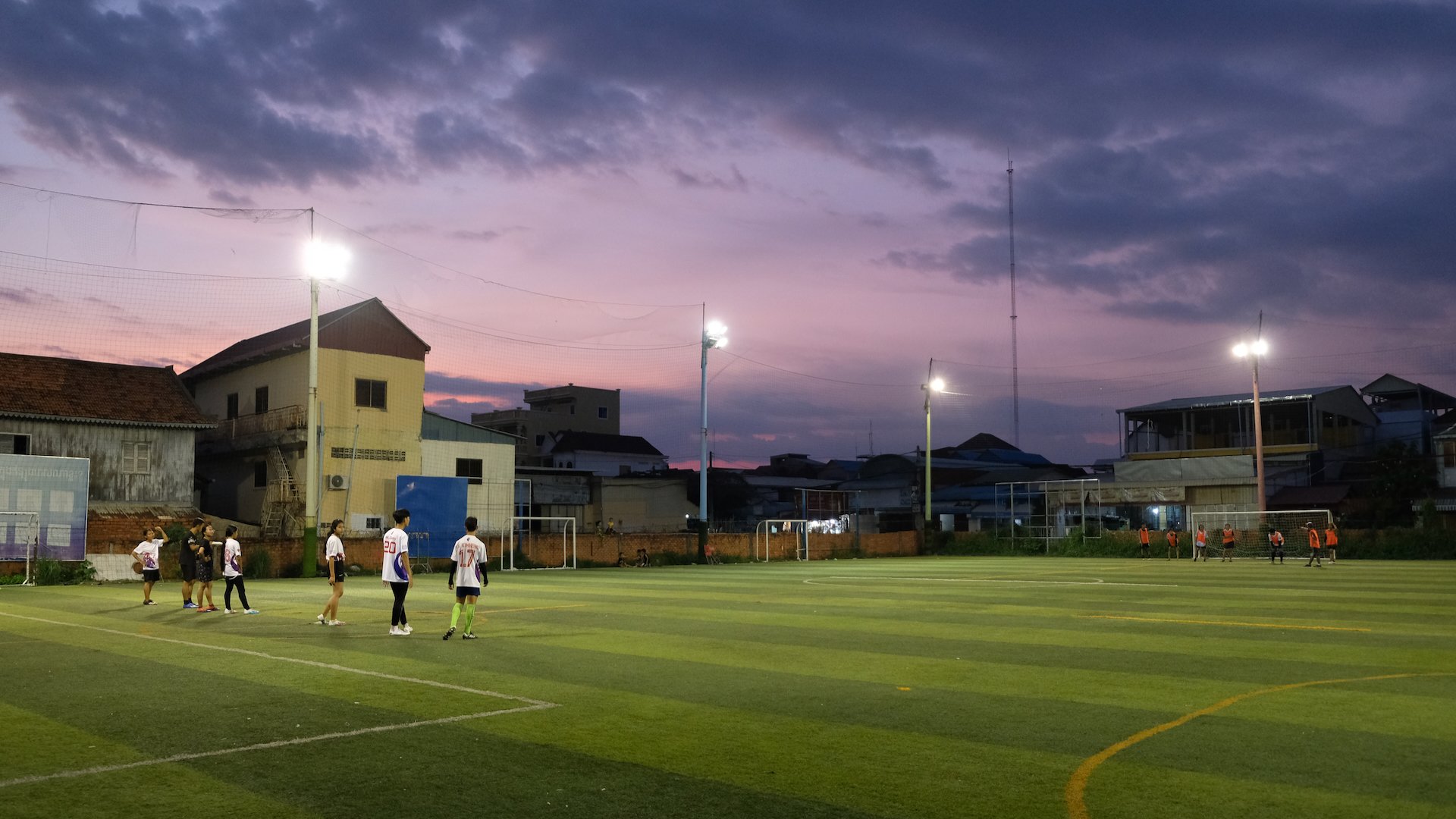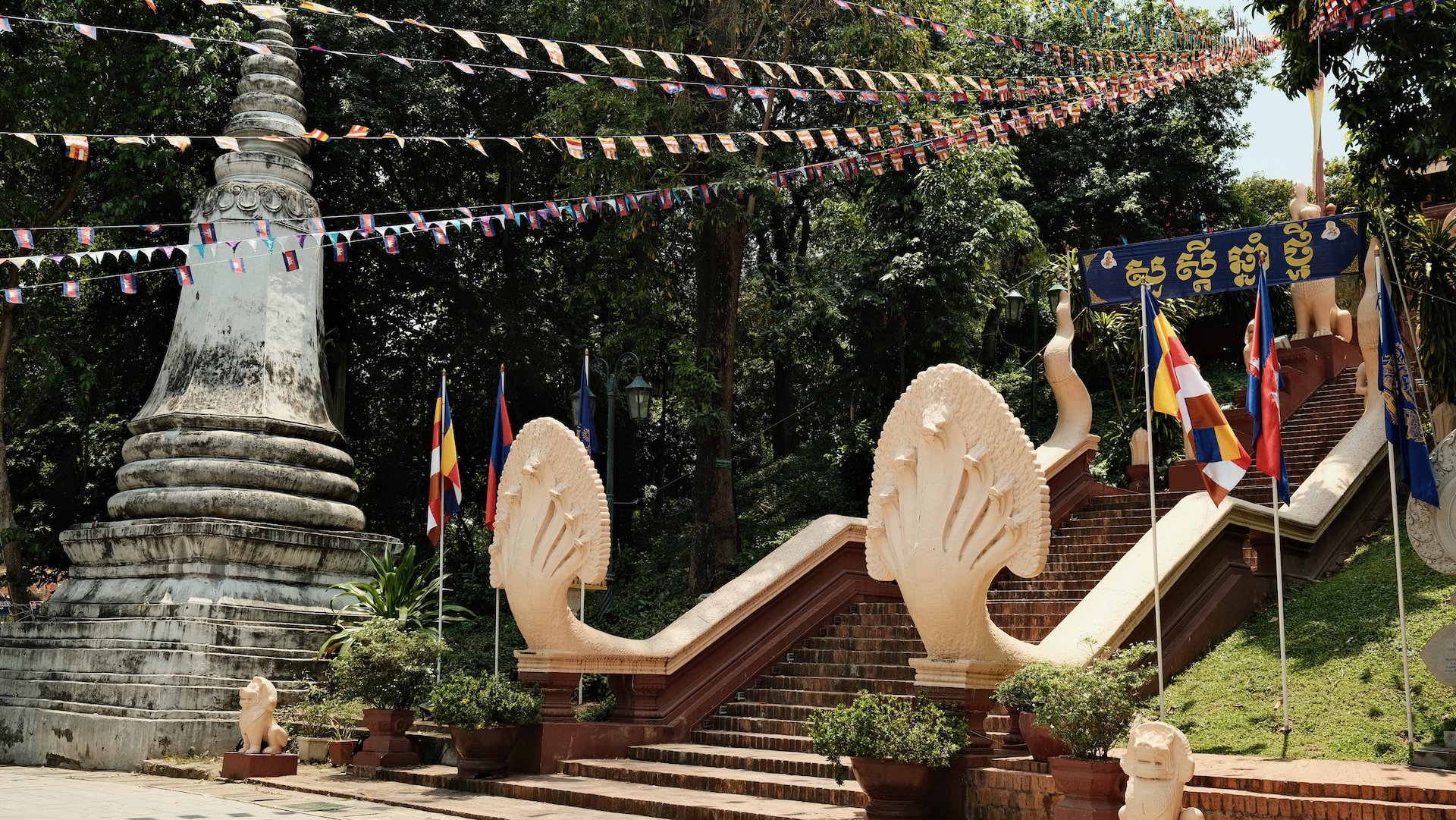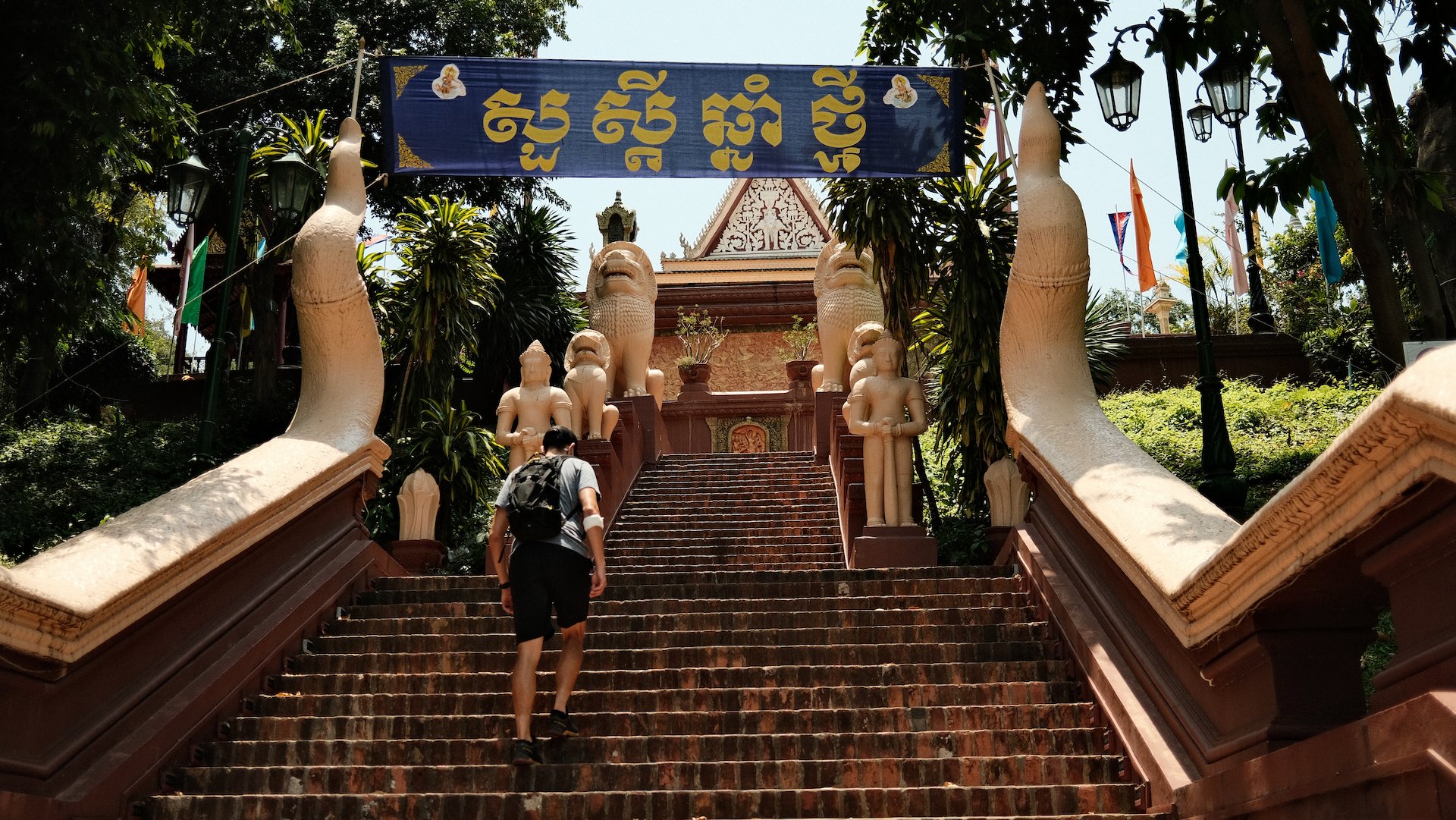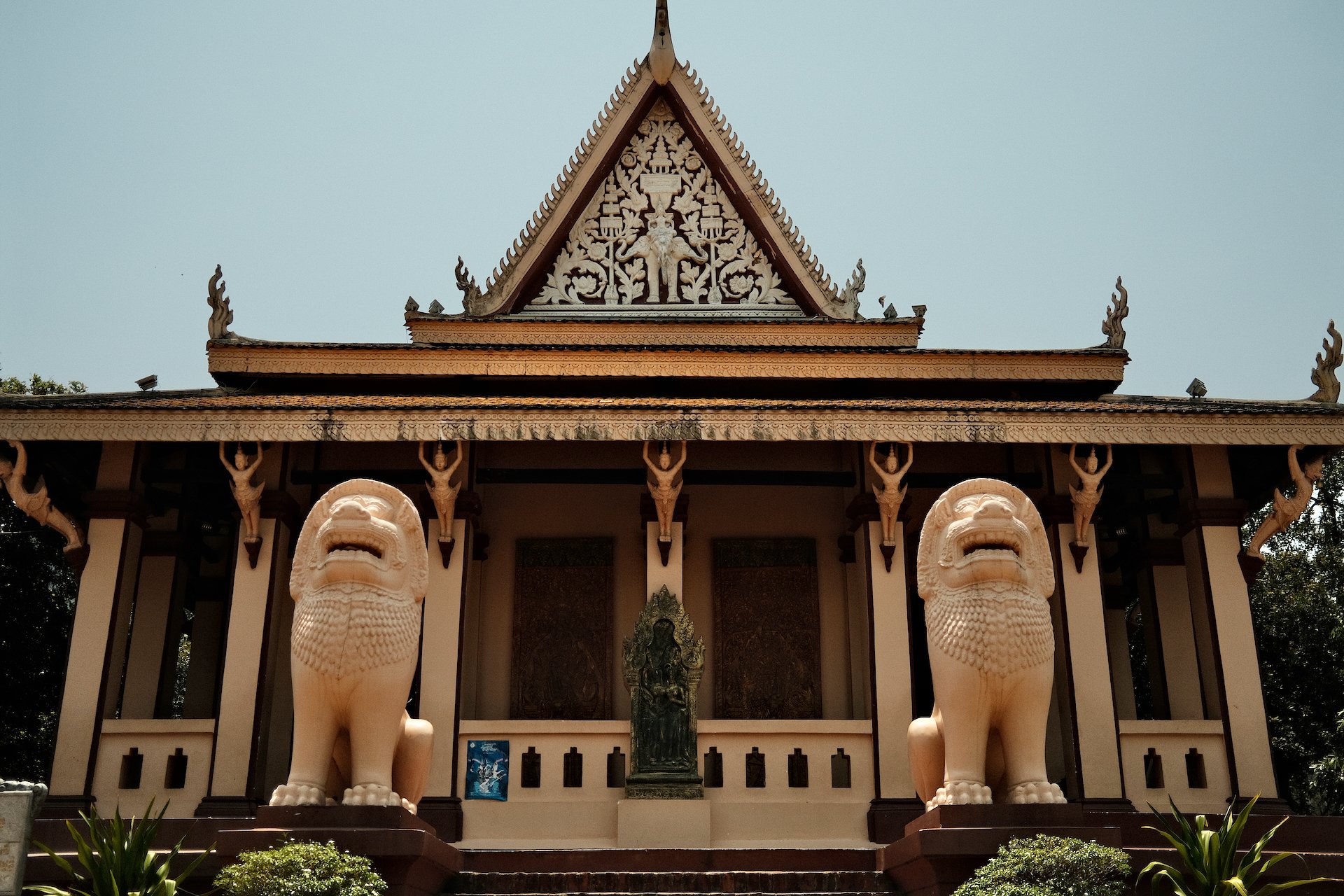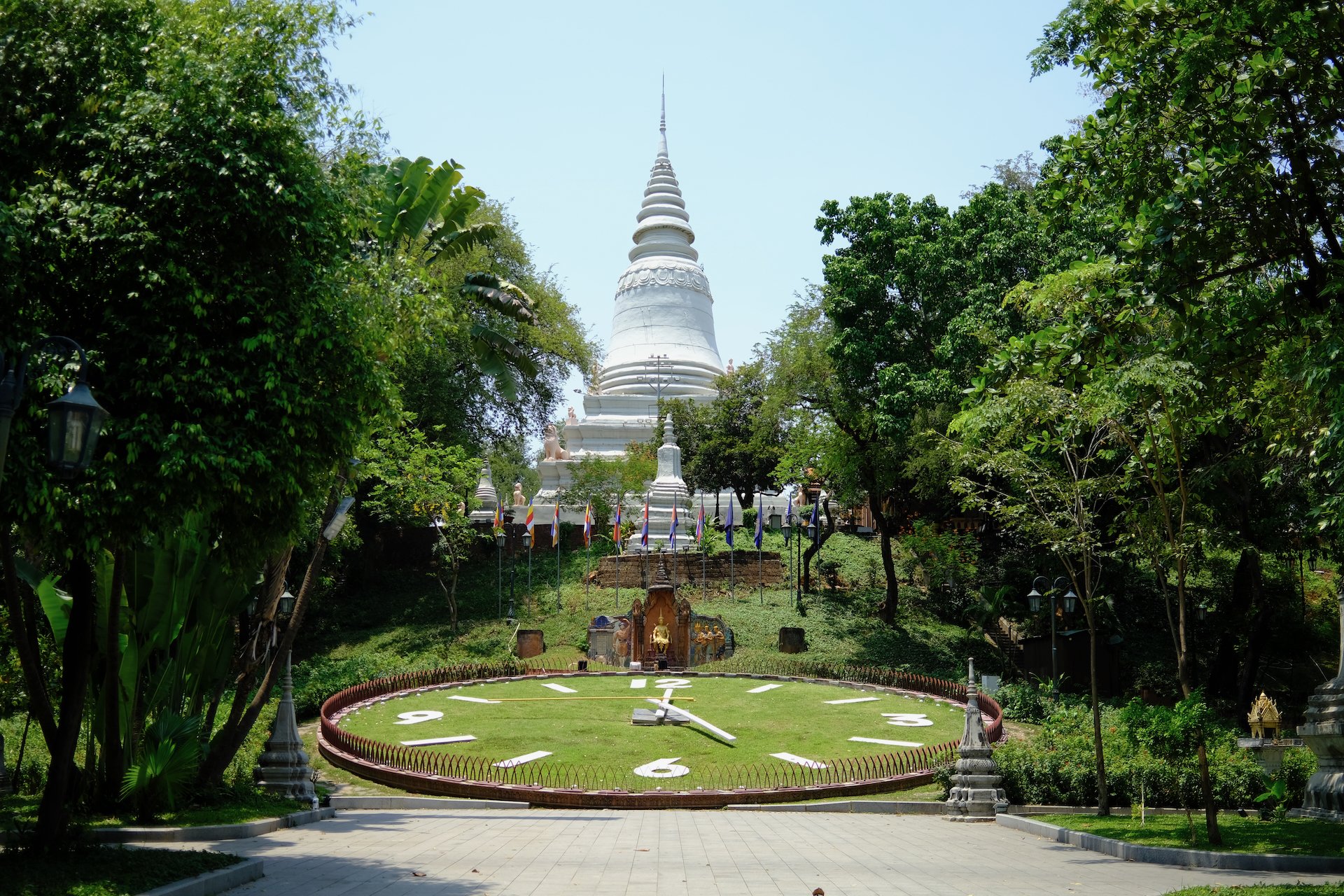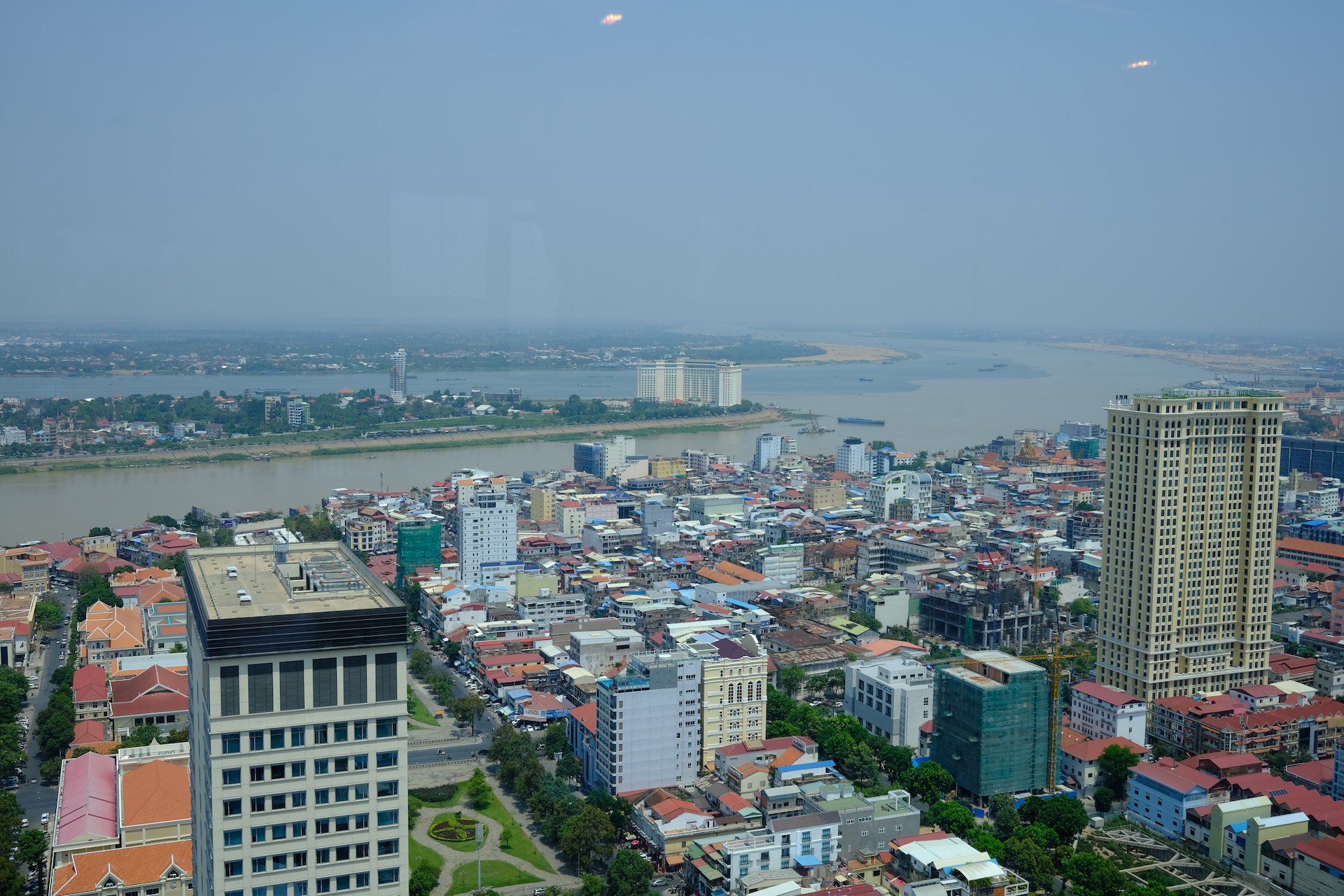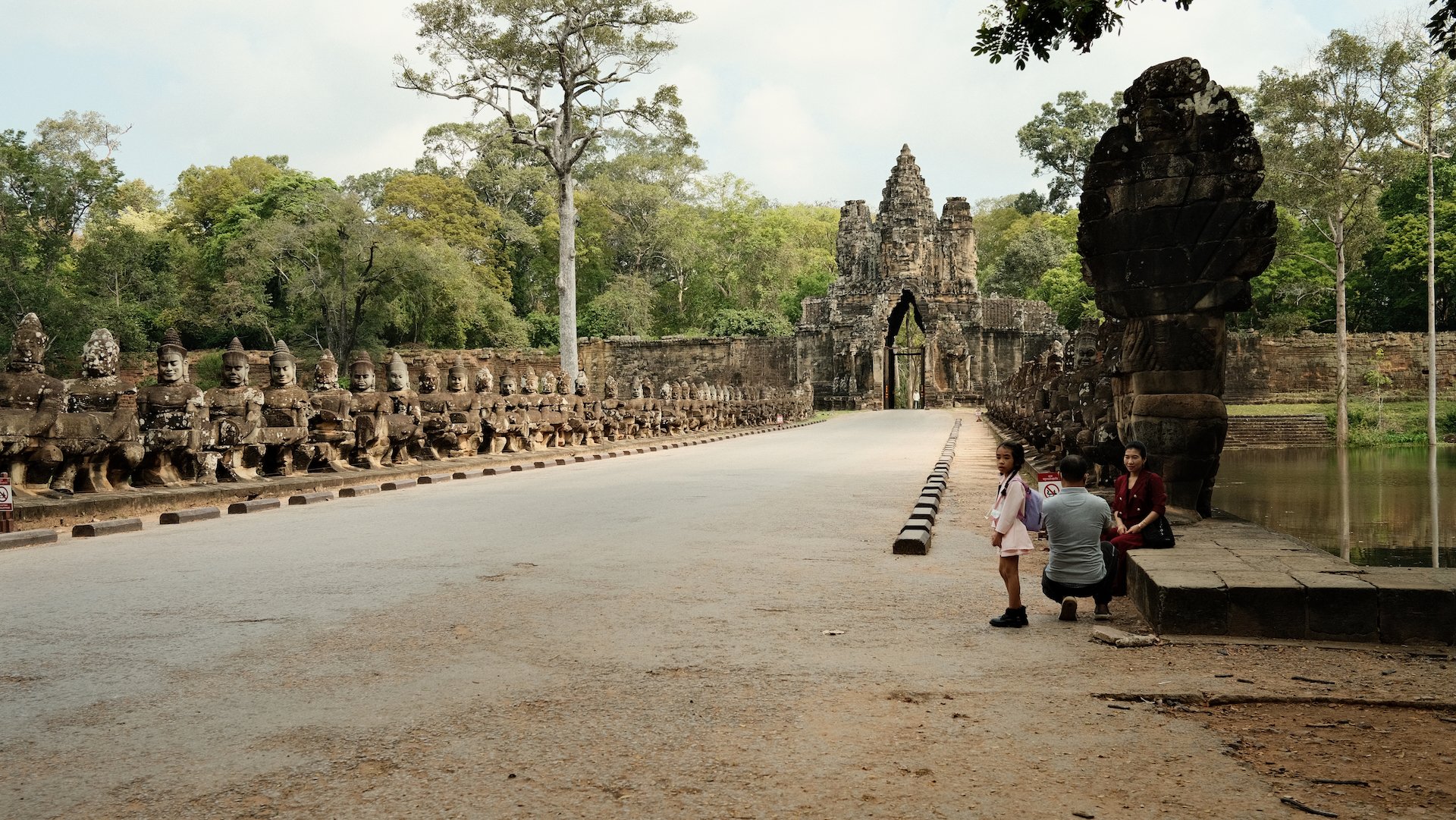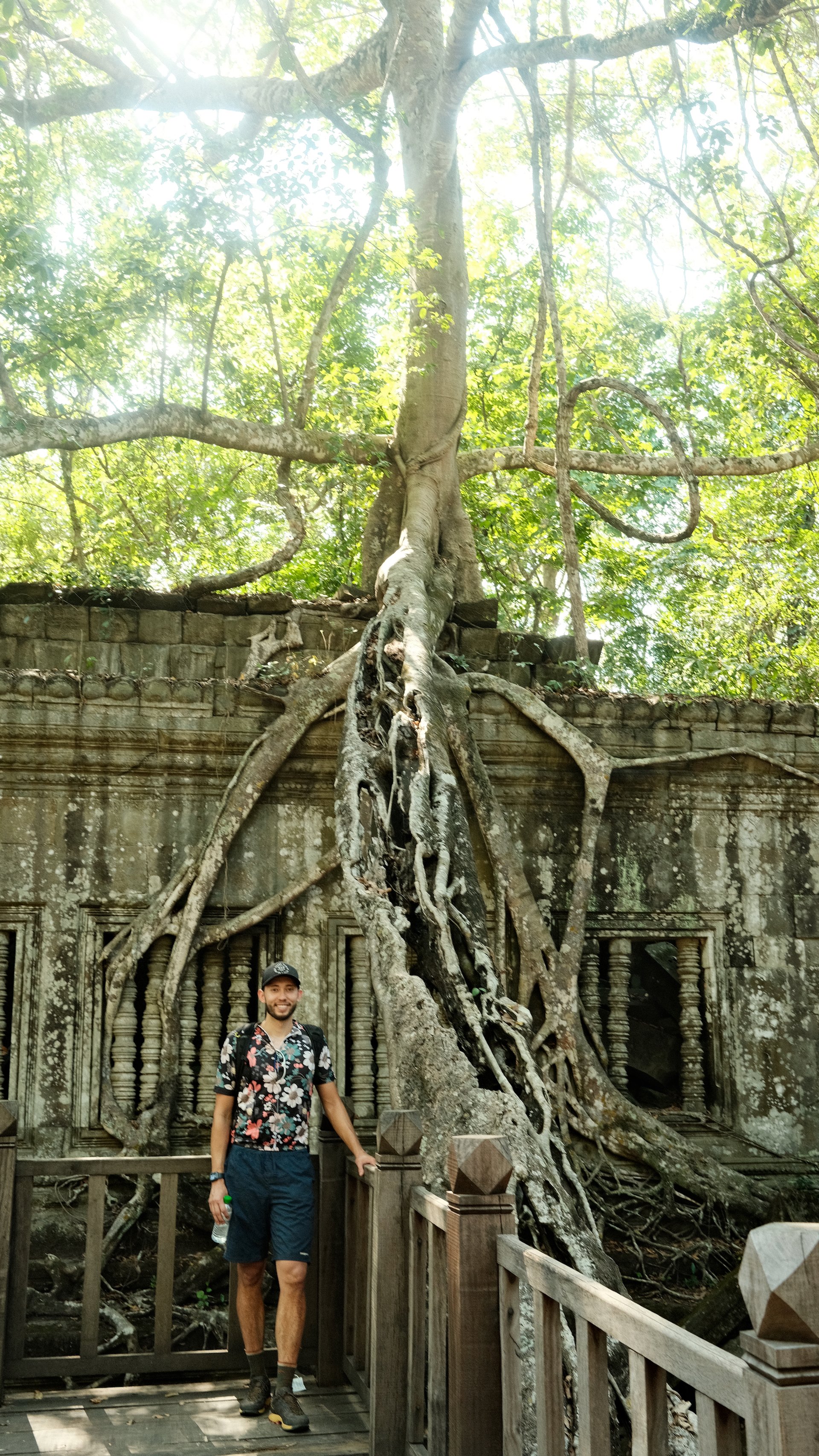Cambodia
We continued our bike tour of Southeast Asia with a 10-day trip in Cambodia filled with temples, powerful history, local experiences, gravel country roads, and much more.
Siem Reap
Siem Reap is the original capital city of the Khmer Empire, the direct predecessor of modern day Cambodia. It is also the home of many ancient temples, the most famous of which is Angkor Wat. Our adventures began from the moment we stepped foot outside the airport terminal with our luggage. The hotel sent a motorbike tuk-tuk taxi to shuttle us, and our 2 oversized bike bags, into the city. Caitlin and I were convinced it would not be possible but the persistent taxi driver proved us wrong. We eventually made it with all our gear to our lovely hotel in downtown Siem Reap which became our place of refuge during the next 4 days of site seeing around the city.
For our first day of cycling, we met our tour guide and support tuk-tuk in front of our hotel and set off for Angkor Wat. The temple complex is protected by a series of walls and moats in the shape of a square with bridges and entrances at the north, south, east, and west directions. We arrived at the southern gate where we learned about the 54 angel and 54 demon statues flanking the bridge. They represent the Hindu myth of the “Churning of the Ocean” where the angels and demons worked together to pull the head and tail of the snake Shesha in opposite directions, churning the ocean and creating the other elements. We rode through the gate and turned sharply to the left to climb up the earth embankment that formed the complex’s walls. We proceeded to ride for several kilometers on top of the wall and along the moat, all while enjoying the unique elevated perspective.
Southern entrance and bridge into the Angkor Wat temple complex with 54 statues on either side.
Example of a location where the Buddha image had been removed.
We toured several impressive temples within the complex throughout the morning. At each one, we learned about its specific historical significance. We also learned that Cambodia’s history includes several eras that alternate between being primarily of Hindu or Buddhist faith. Traditions and art from both religions are evident in the temple architecture and ruins we see today. We found it most interesting to see locations where the Buddha’s image had been removed from the surrounding stone relief leaving a blank spot on the wall. The dramatic trees growing out of the temple structure are another unique and impressive feature of the temples we visited in Siem Reap.
After lunch, we proceeded to the heart of the temple complex for the main attraction - Angkor Wat. This world heritage site, the largest religious monument in the world, was originally constructed as a Hindu temple in honor of the god Vishnu. From the height of the towers, to the sprawling layout of the gallery and grounds, the scale of the temple is awe inspiring. Our tour guide walked us through the flanking galleries and explained the stories depicted in the detailed carvings on the walls. Having approached from the rear of the temple, we exited to the front and main lawn. We turned around to take several photos of the iconic temple in the brilliant afternoon sun.
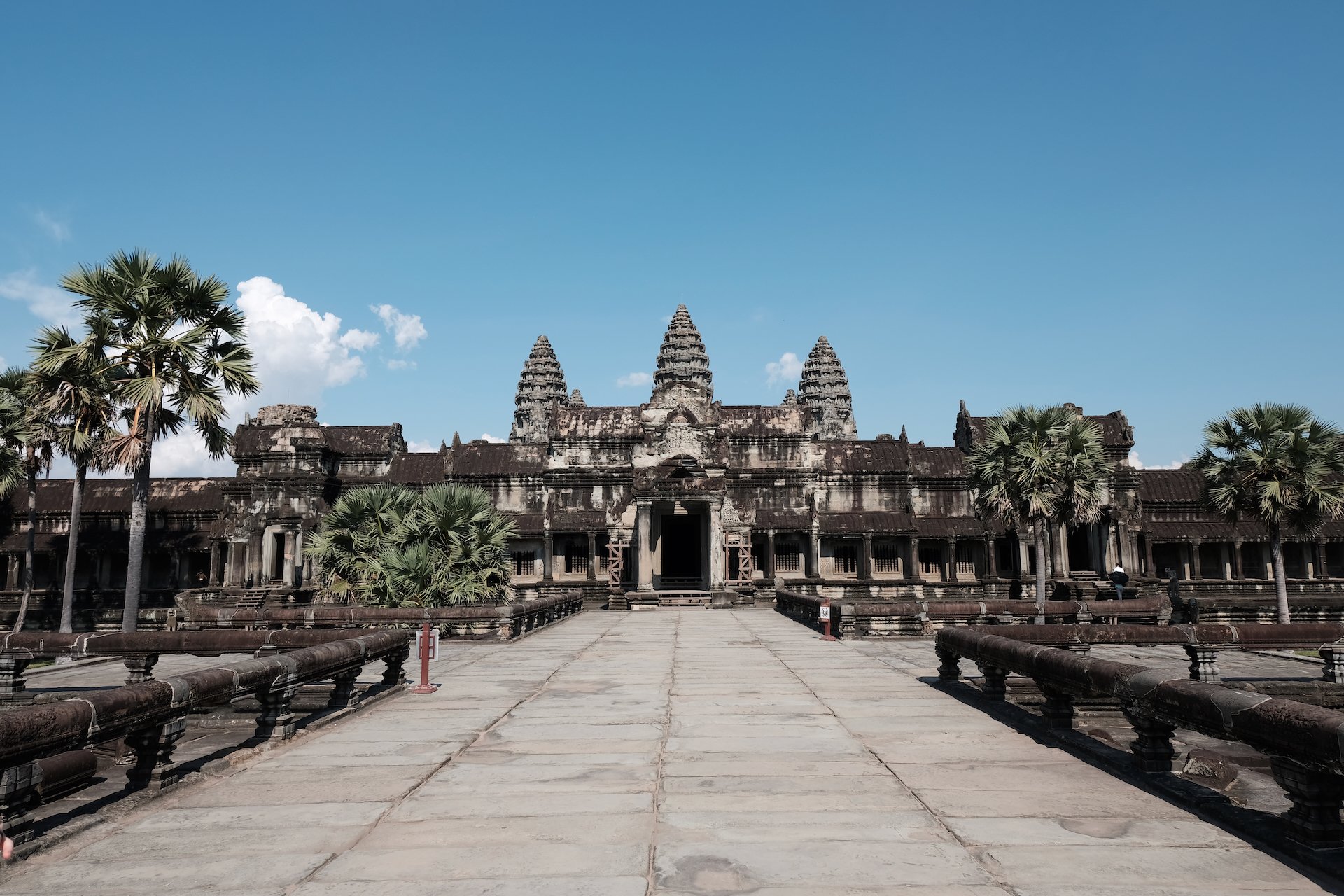
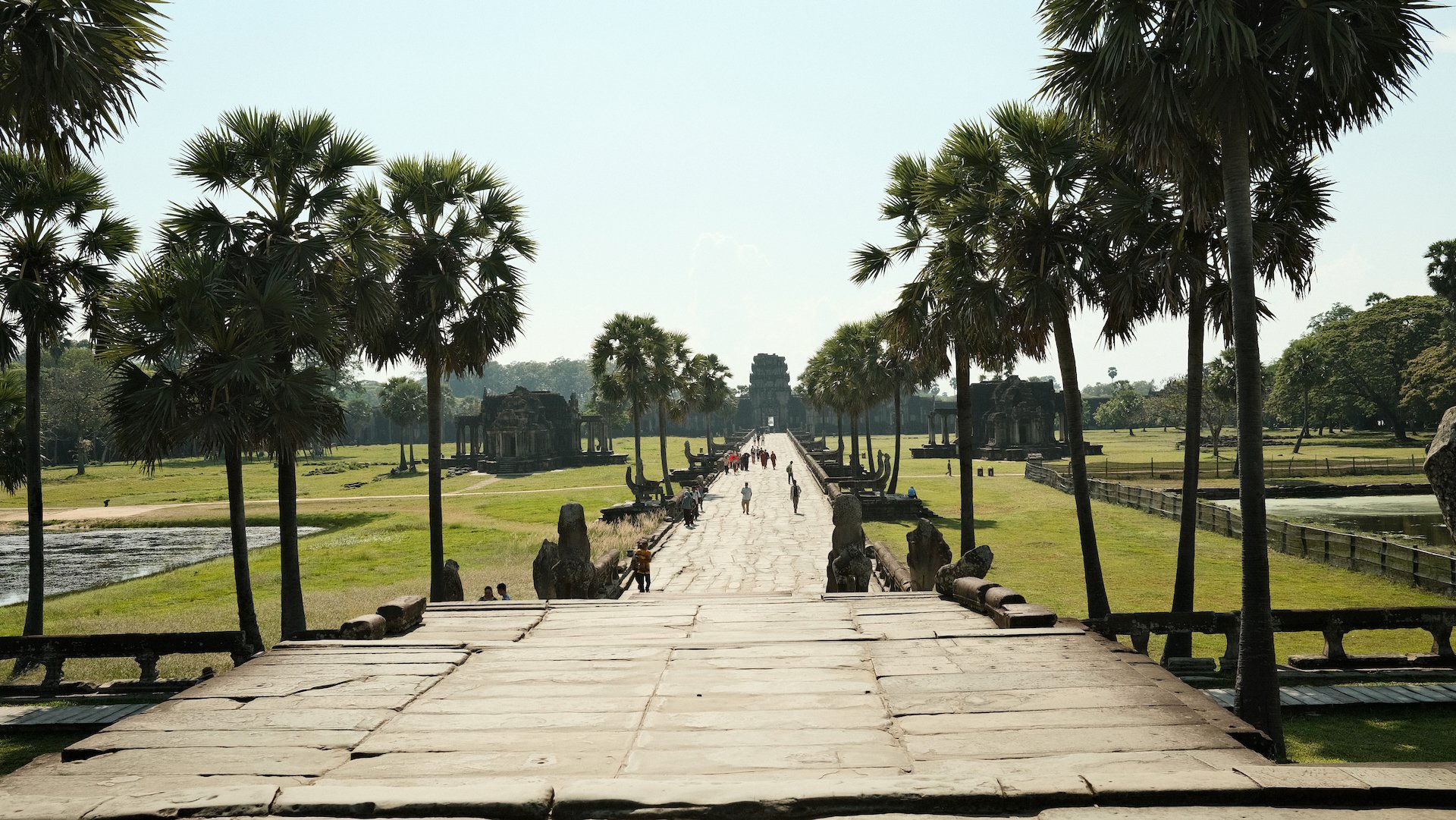
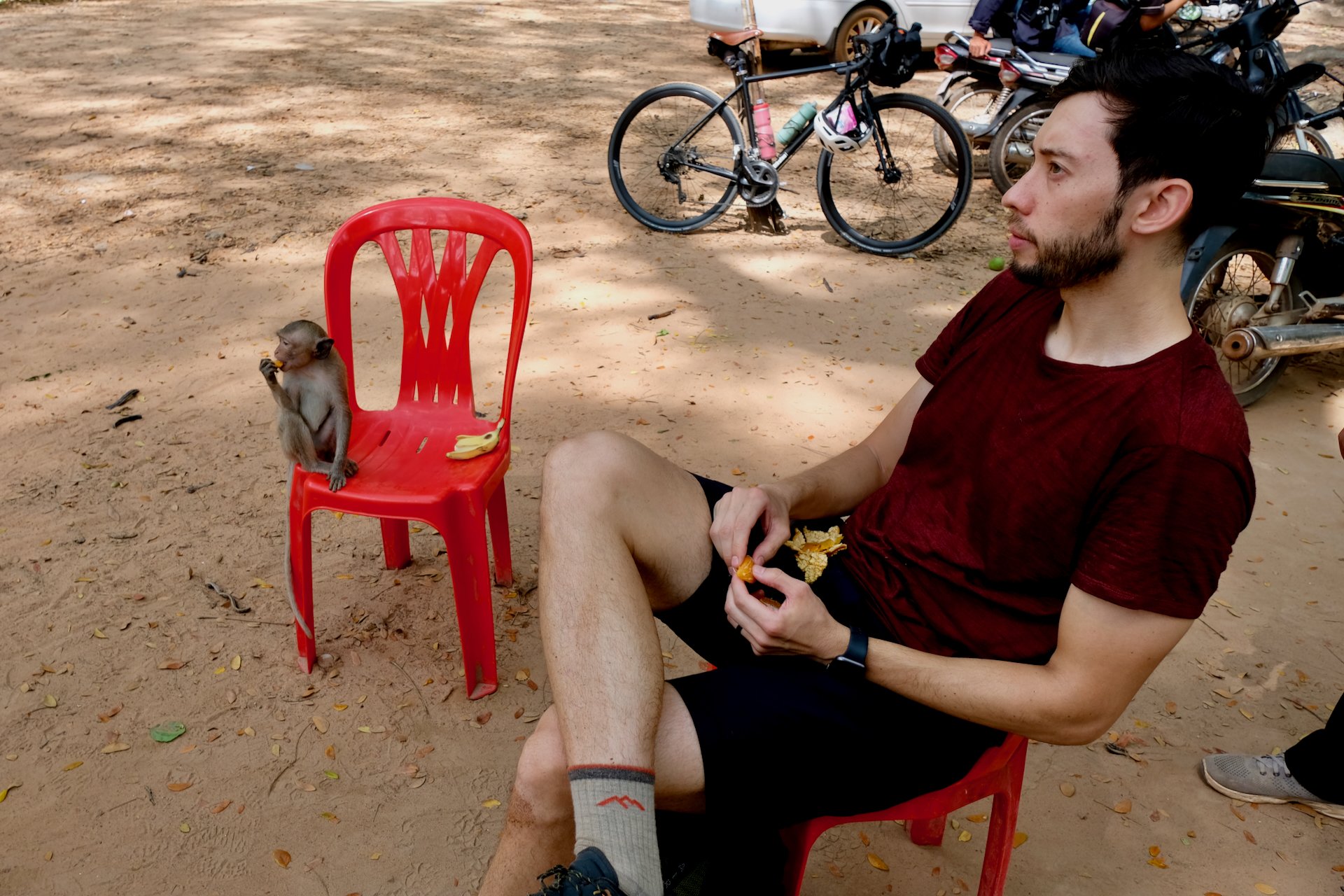
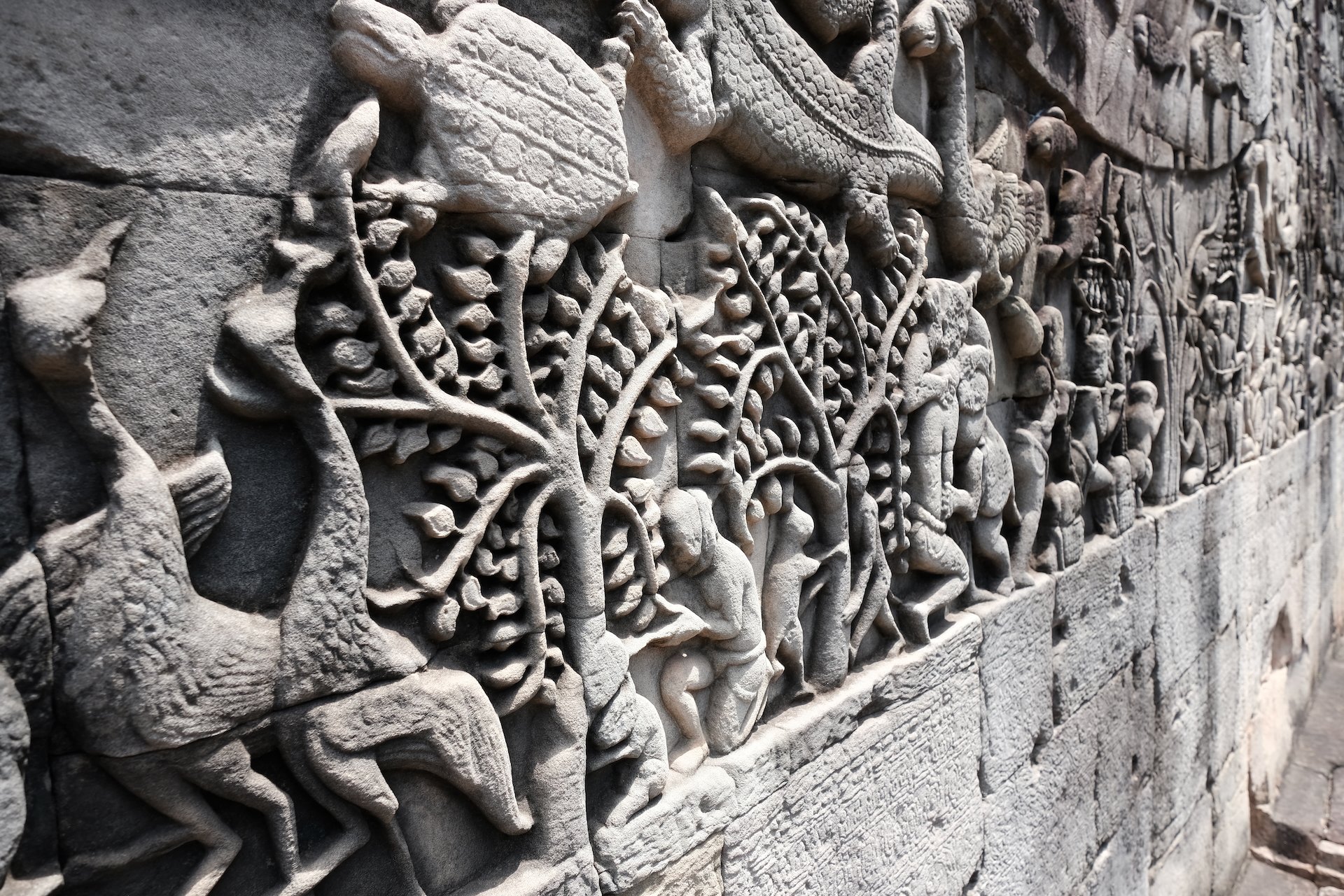
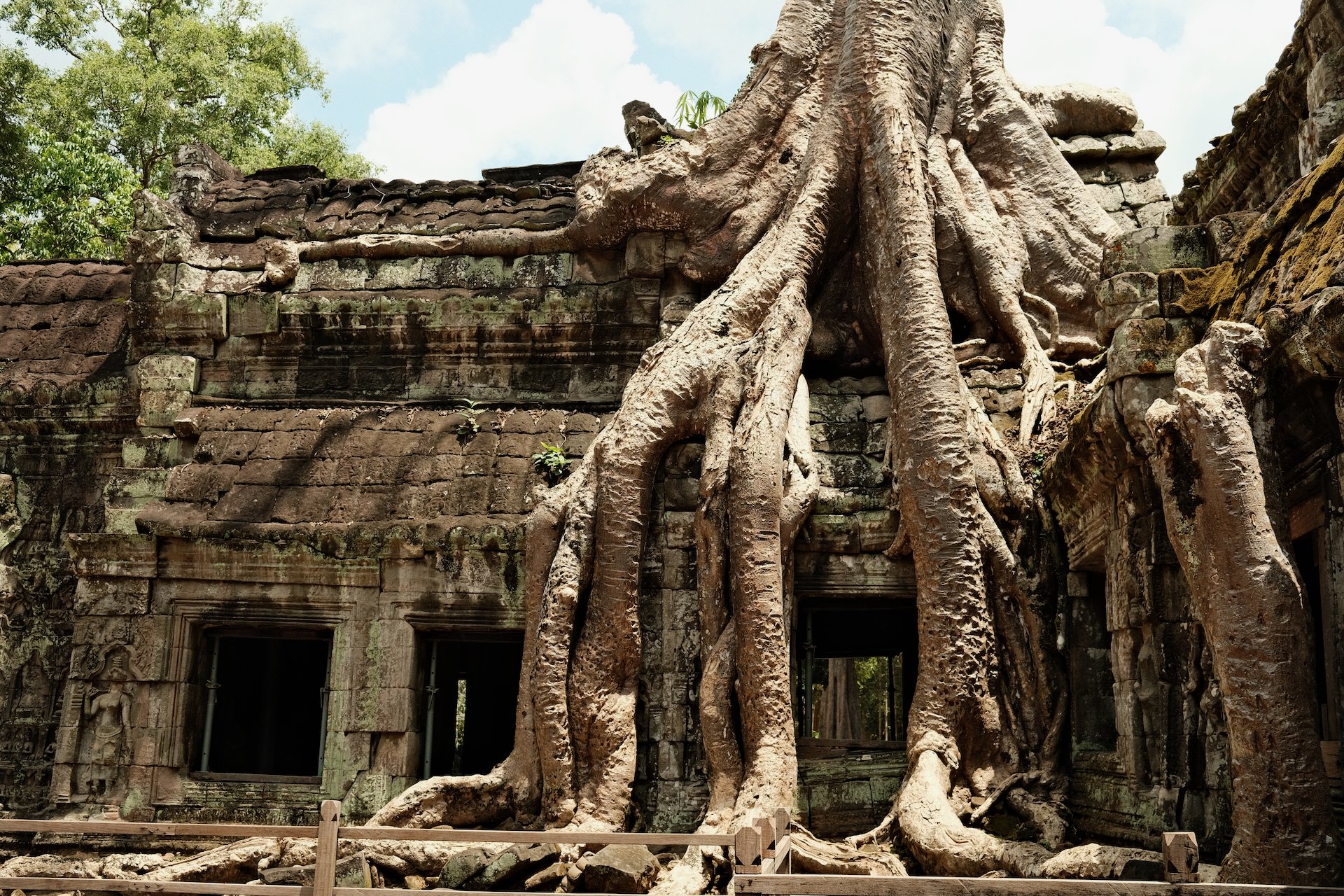
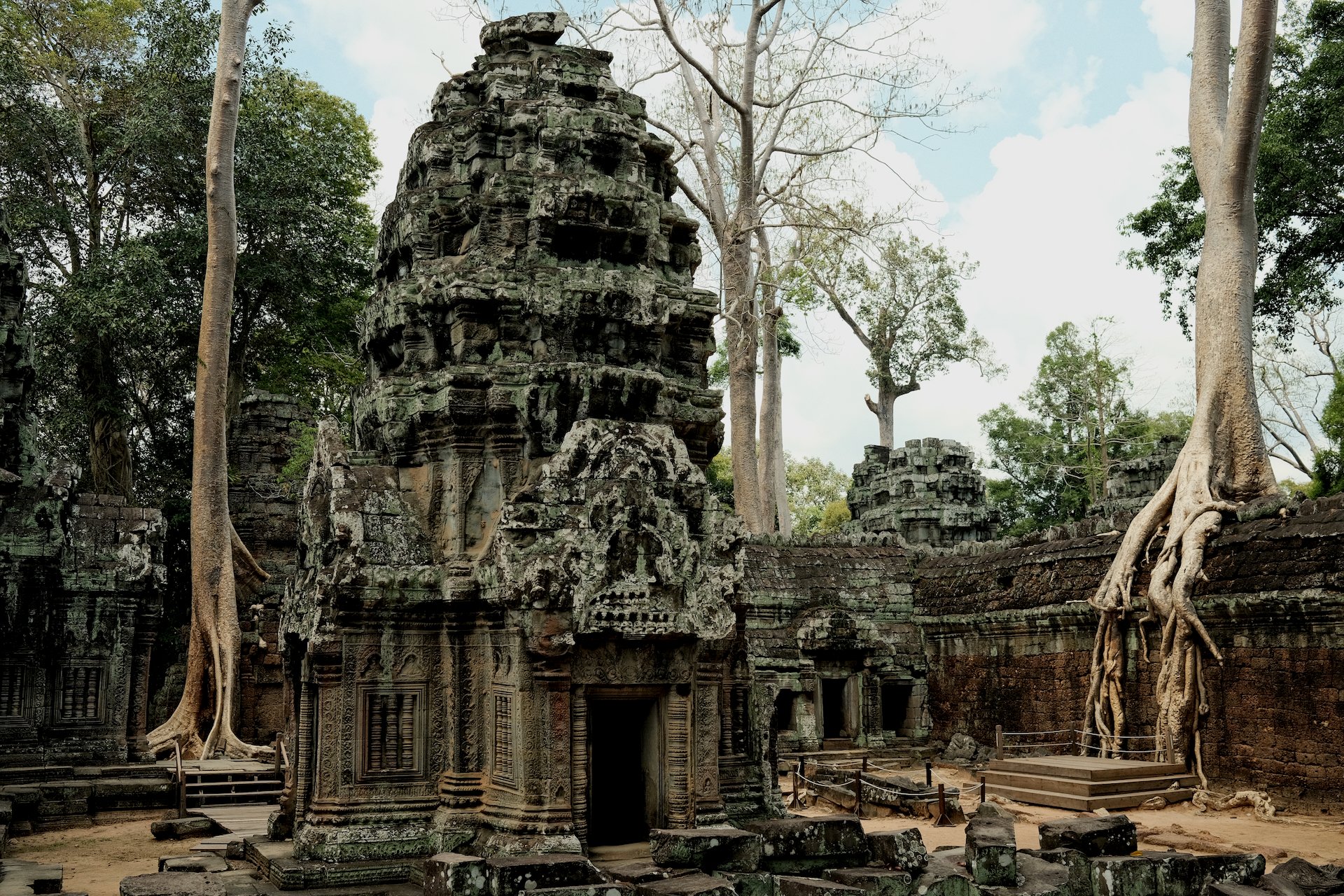

Ride through the Countryside and along the Mekong River
After 4 days in Siem Reap, we got on our bikes for one last ride out of the city to the west. After several kilometers of riding, we encountered a narrow trail on top of an embankment with rice fields on either side as far as we could see. We rode for a good hour and a half at high speed, dodging motorbikes and fishermen, all while enjoying the amazing vista across the rice fields. It was a cool morning and the perfect way to kickoff our section of the tour outside the city.
By early afternoon, we reached the “Jungle Temple” made famous as a site in the movie Indiana Jones and the Temple of Doom. Unlike the other temples we visited in Siem Reap, the Jungle Temple has almost no restoration. The towering piles of stone rubble that once made up the structure give an impression of the former scale of the temple. We took our time walking along raised catwalks constructed over top the rubble which gave us a bird’s eye view to admire the site.
The next 2 days of riding were some of the toughest we’ve encountered in southeast Asia. We kept pushing east toward the Mekong River, often on roads in extreme states of disrepair. The combination of scorching heat, endless potholes, and the dense suffocating dust kicked up by the heavy dump trucks left us exhausted. Our guide shared that many locals consider the quality of the roads as a clear example of the empty promises, or even blatant corruption, of their local politicians.
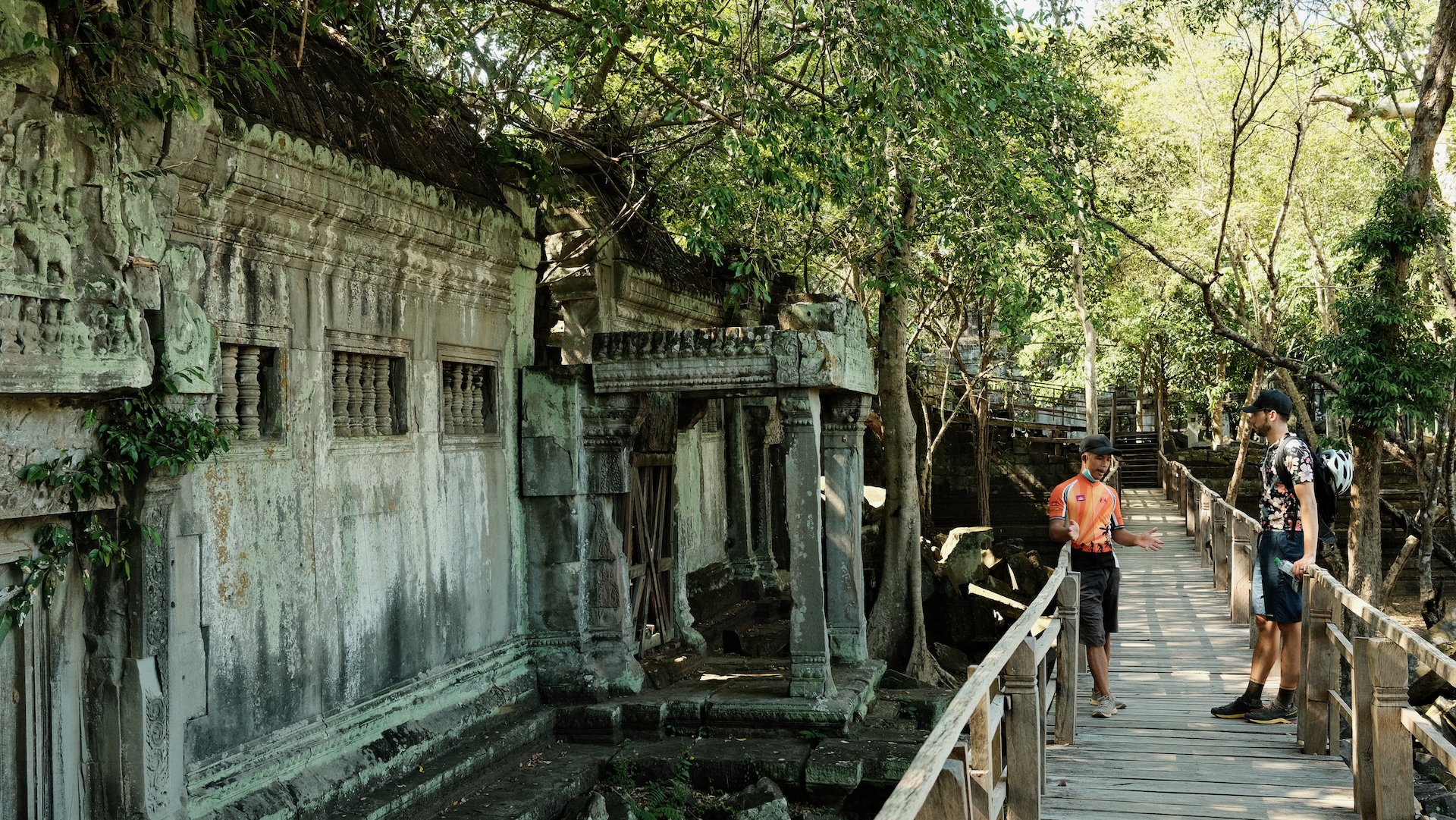
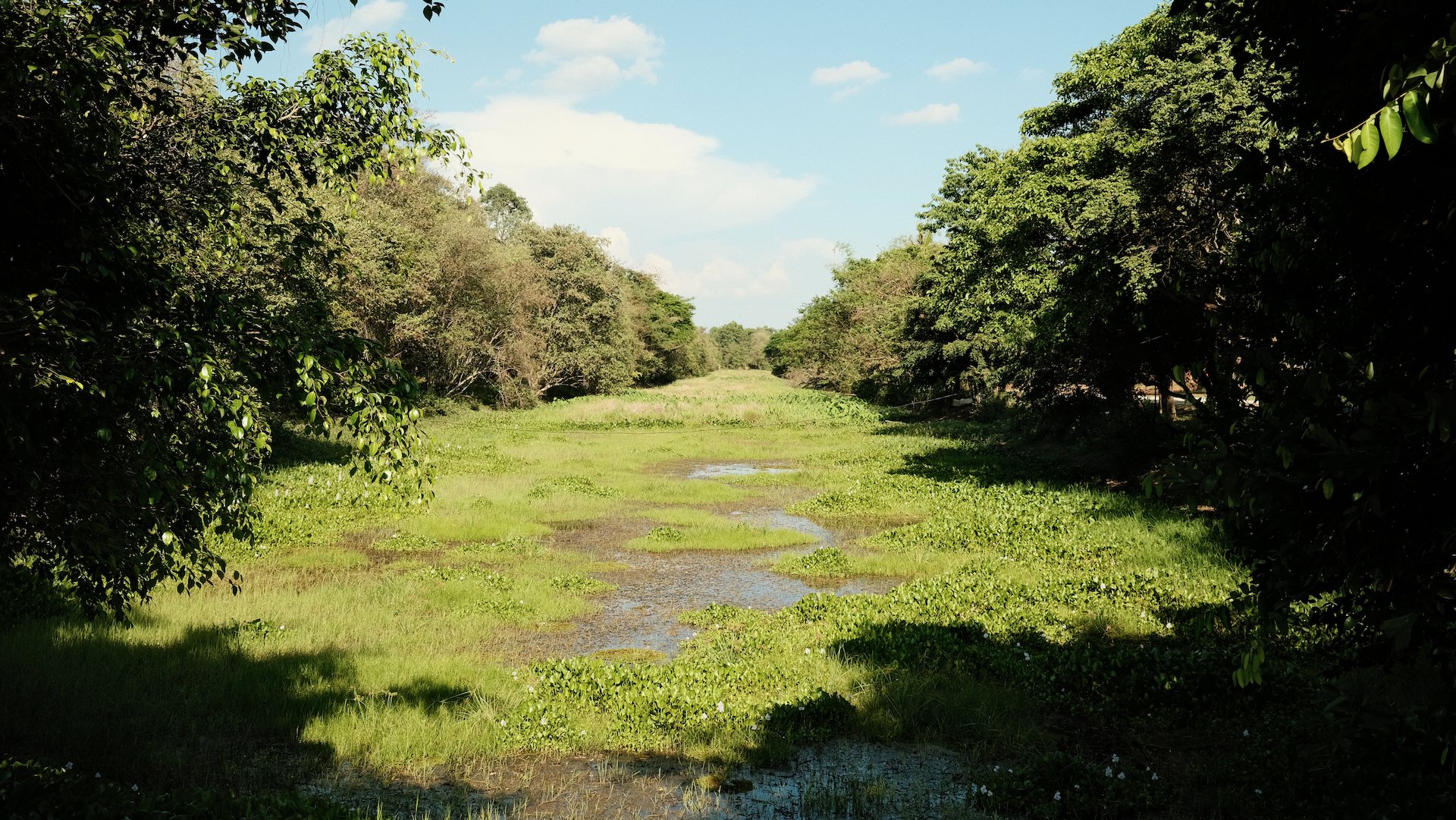
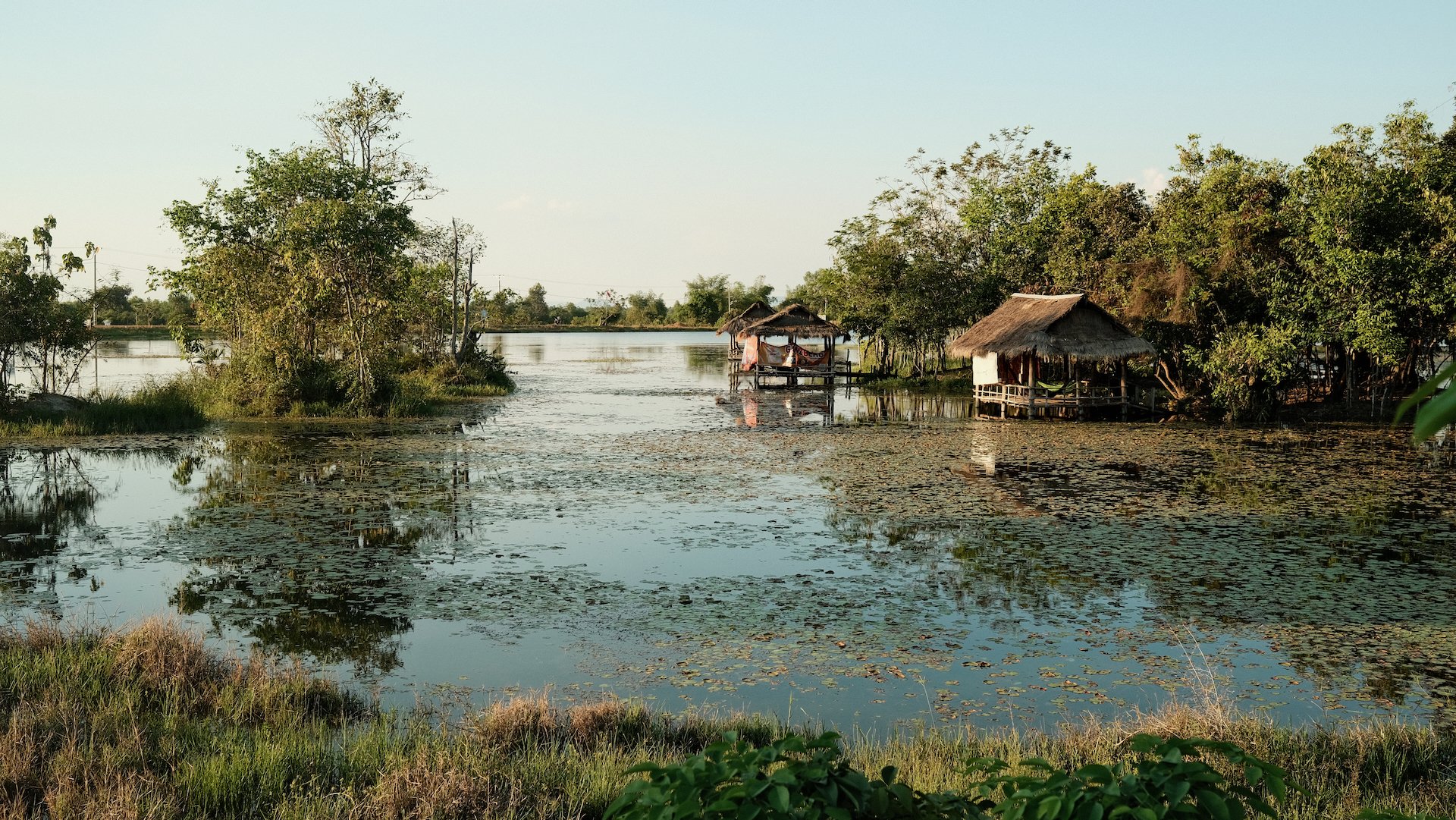
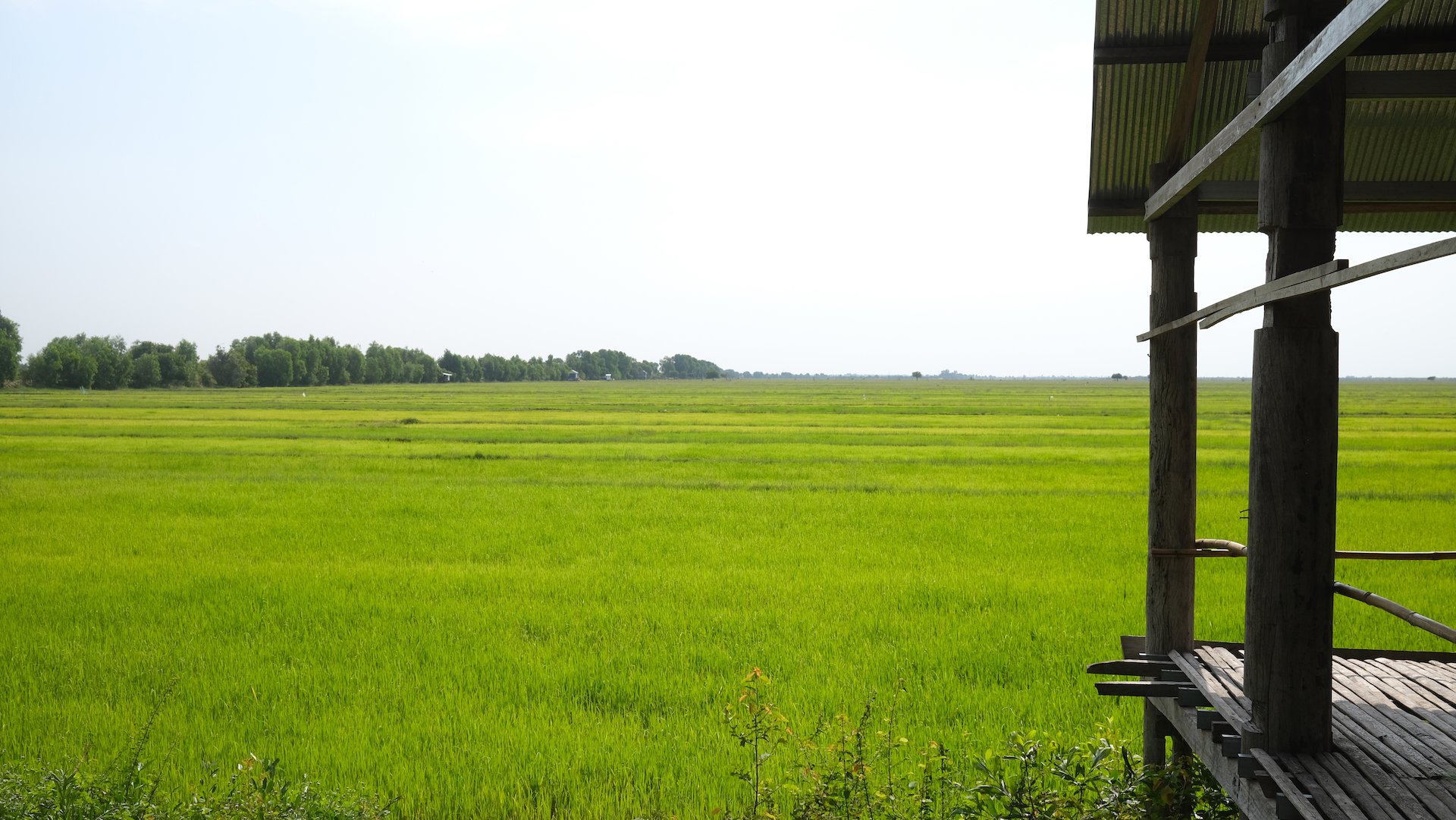
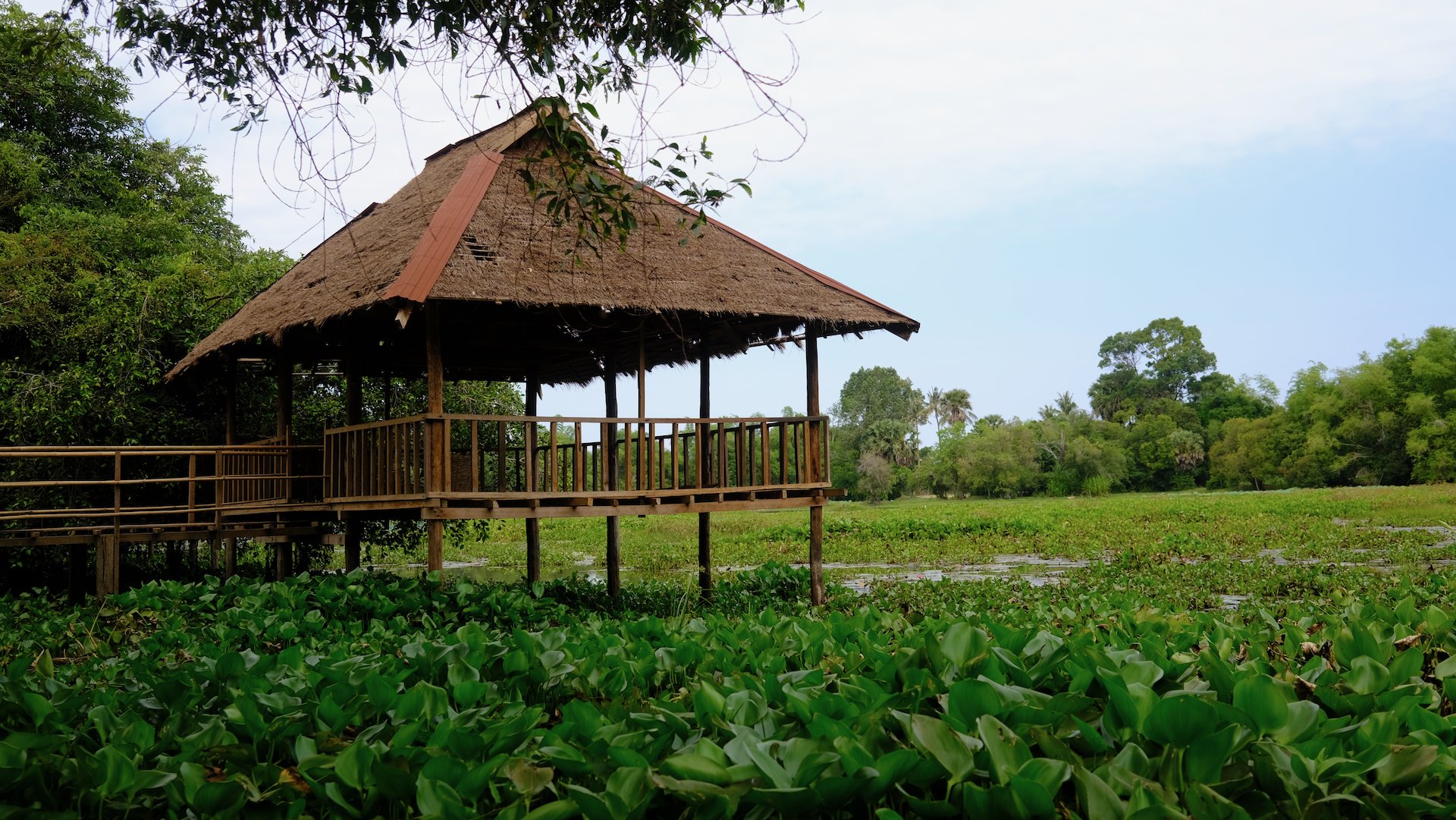
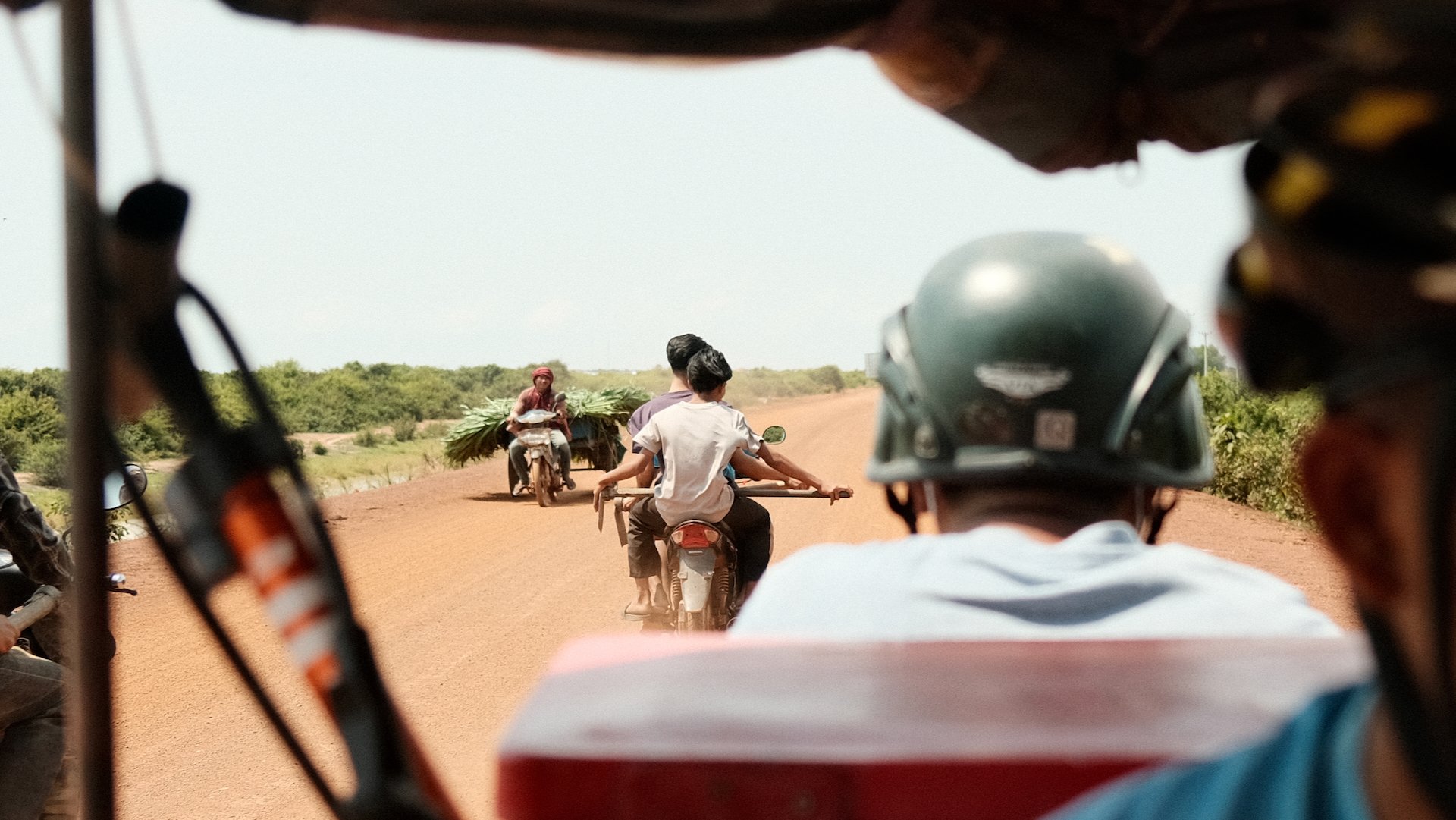
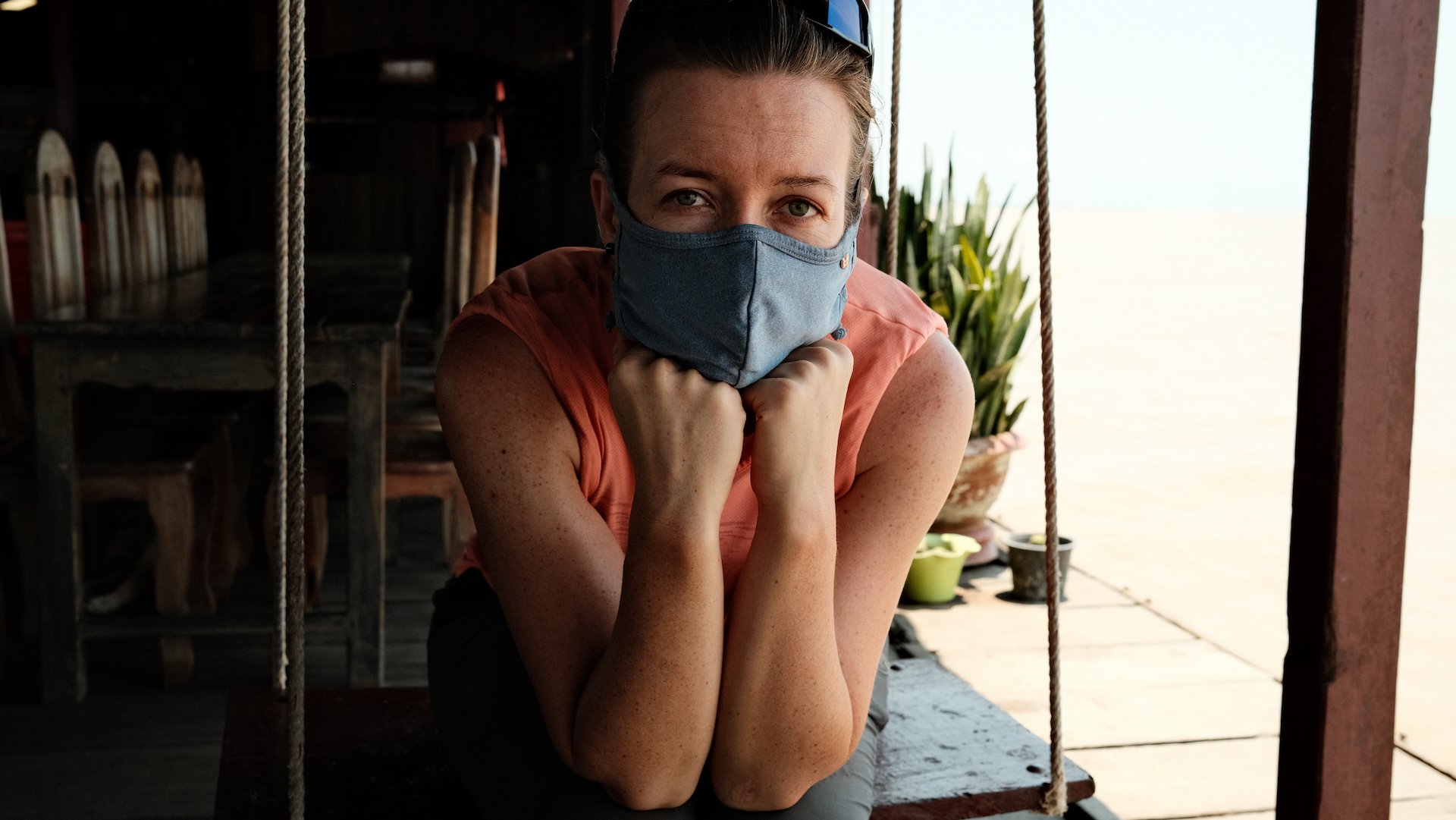
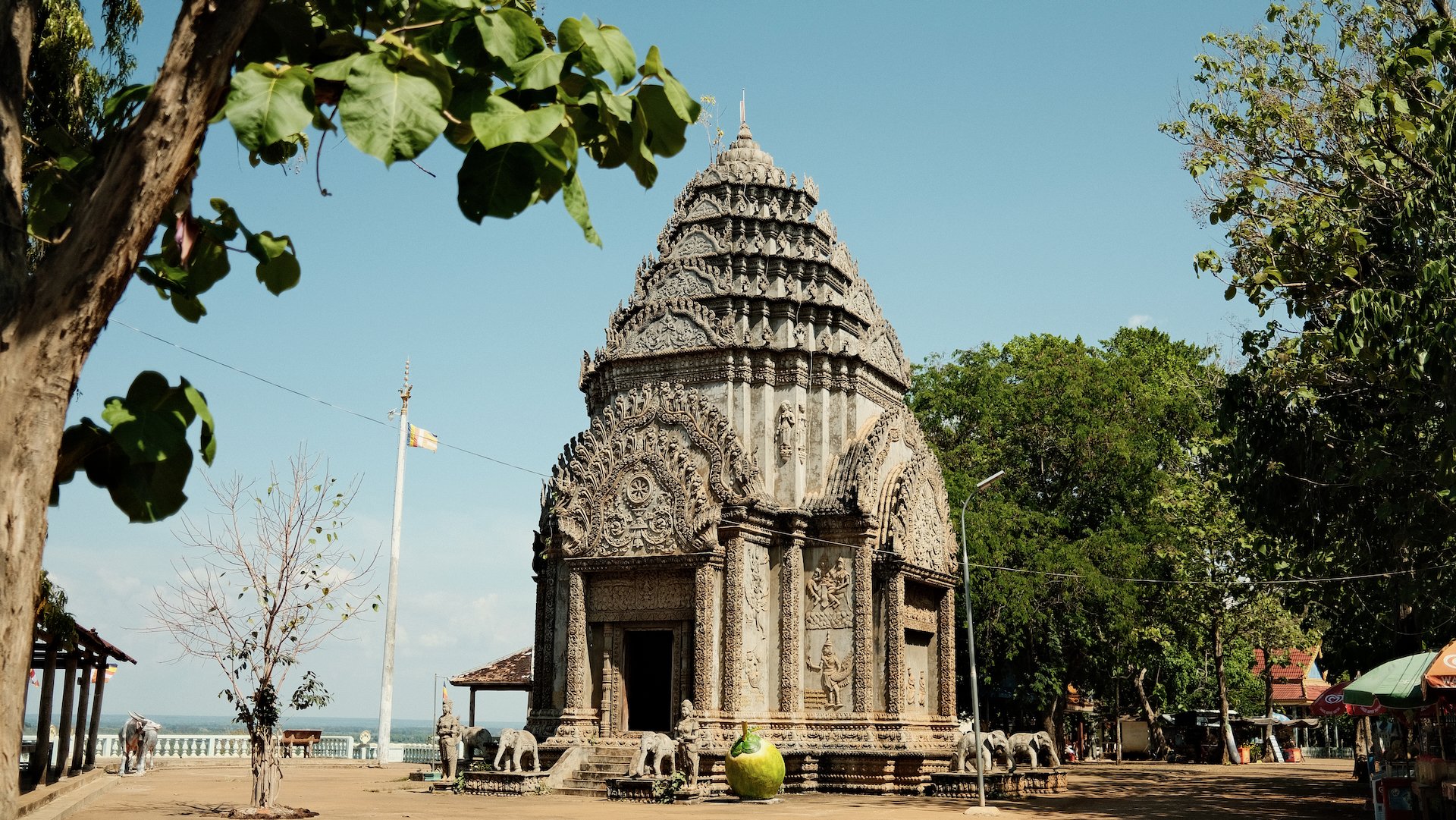
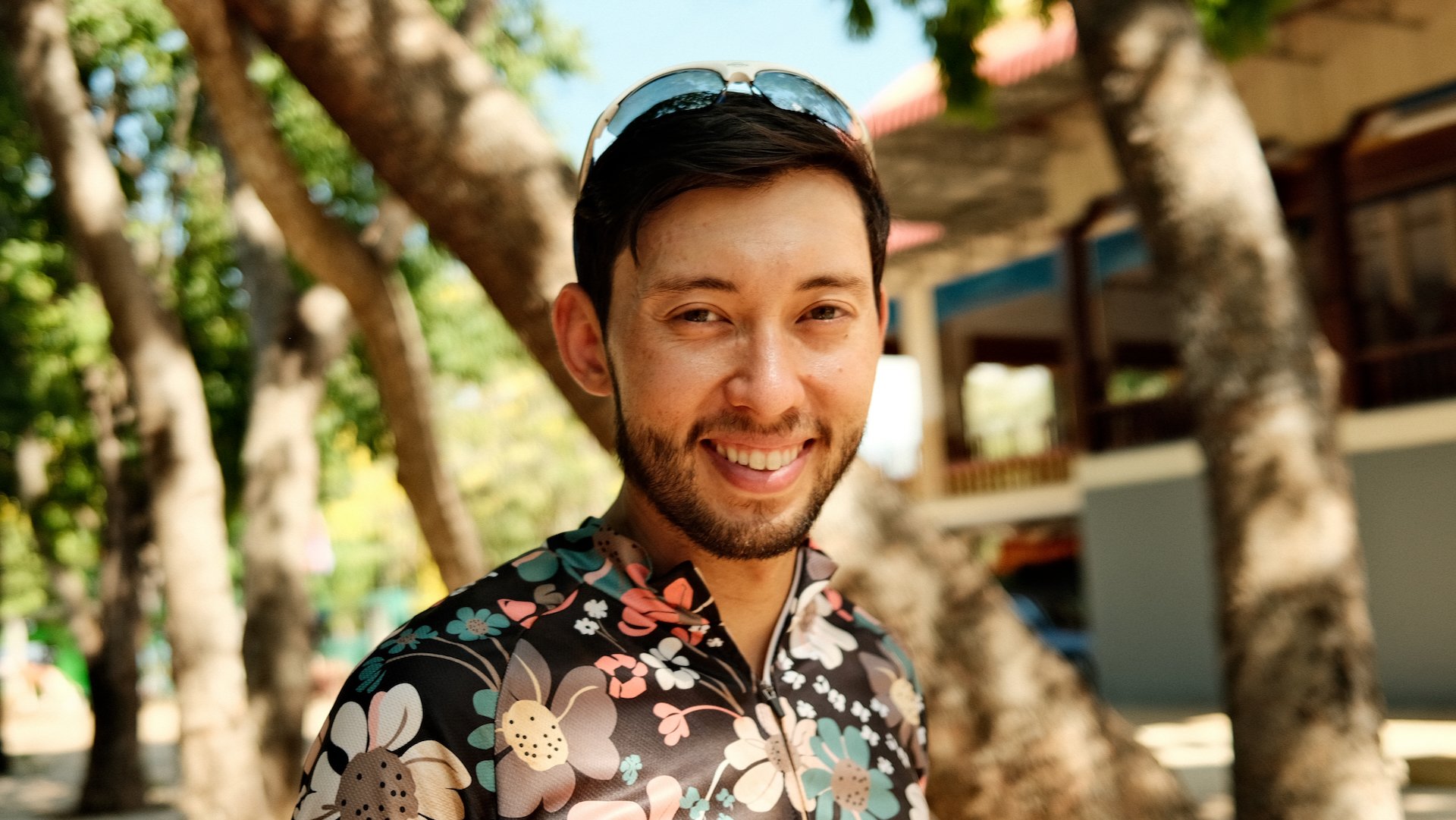
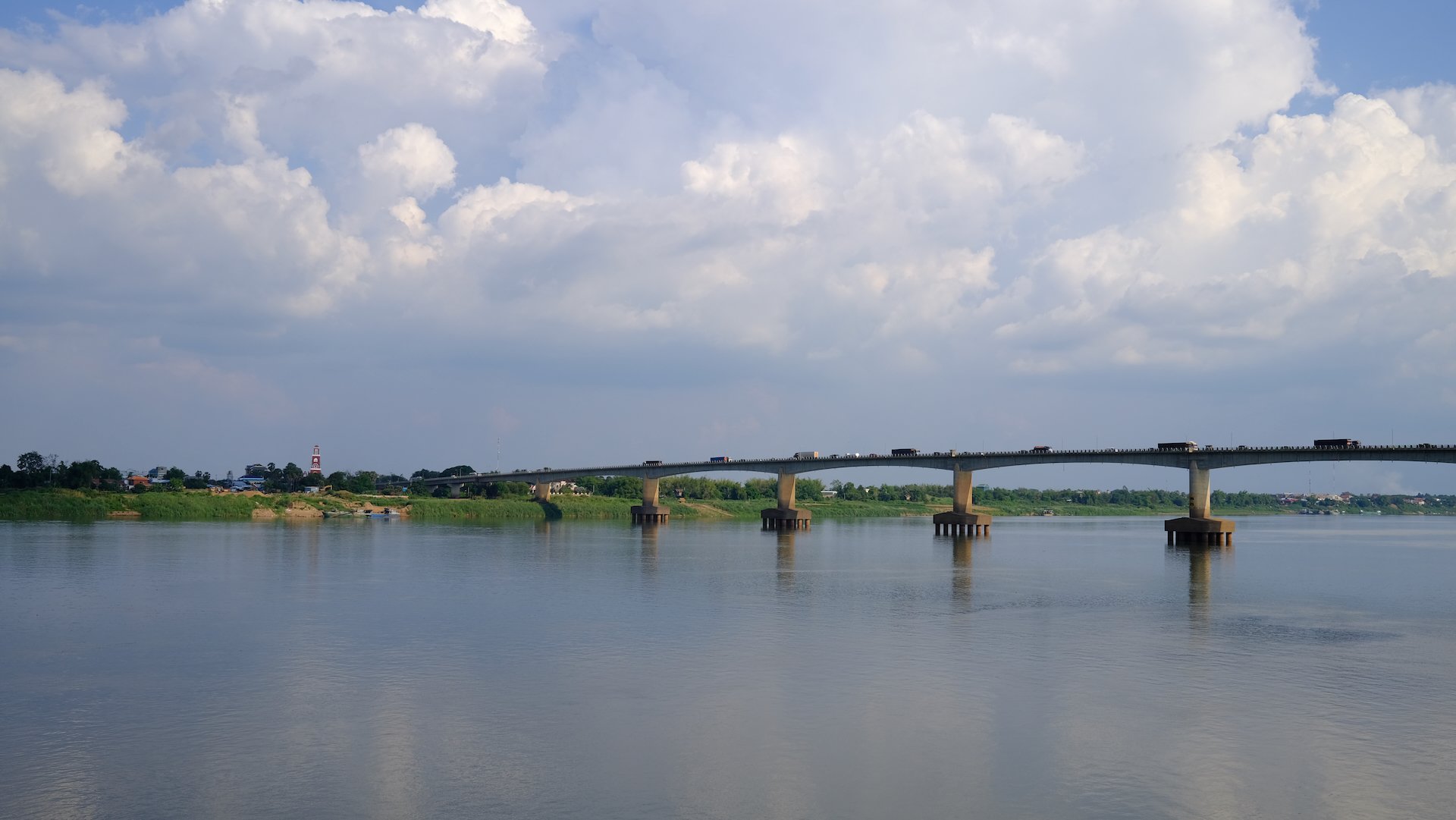
We reached the Mekong on day 5 of the trip and turned to follow it south. This route took us through many small villages along the river where we were warmly greeted by school children with giant grins, enthusiastic waiving, and a loud chorus of “hello!” We eventually reached Kampong Cham where we enjoyed a beautiful sunrise view over the river from our hotel in the morning.
Southern Coast
For the last section of our trip, we rode to the beaches along the southern coast. We were relieved to have smooth pavement for most of the riding. Our bikes felt fast without the storage bags that weighed us down in Thailand. We enjoyed pushing the pace up to 25-30kph for long stretches compared to the 18-20 kph that is more typical for us on gravel roads or weighted bike packing.
We had a good night’s rest at a hotel in the beach town Kep before getting up early for a boat ride to a near by island. We spent the morning relaxing on the beach, exploring the island, and taking lots of photos. The water and views were stunning, but the overall experience was spoiled by the overwhelming amount of plastic litter that had washed up onto the beaches and into the adjacent mangroves. We returned to the mainland in the early afternoon to complete our final afternoon of riding.
Phnom Penh
We rounded out the tour with a few days in Phnom Penh located at the junction of the Mekong and Tonle rivers. Our first day in Phnom Penh was the most emotionally challenging of the trip. Our guide brought us to two notable landmarks memorializing the atrocities committed by the Khmer Rouge between 1975-1979: the S21 Prison (Tuol Sleng) and the Choeung Ek Genocidal Center. The Khmer Rouge came to power after overthrowing the government in the Cambodian civil war. The communist regime immediately began to reshape the country according to their extremist beliefs in self-sufficient agriculture, xenophobic purity, and a culture of extreme paranoia. At the former prison, we learned that massive portions of the population were forcibly relocated from urban centers to become farmers and millions of people were killed because of perceived political subversion or racial impurity. We saw the atrocious living situations and read about the heinous torture prisoners endured as coercion to name their family members and associates (who were subsequently arrested and brought to the prison). At Choeung Ek, we witnessed the mass graves of victims to include infants and children. Manipulating human nature to react in fear of anything or anyone that is different is a familiar tactic. It is a trait we find within our own culture today and one which we must fight against. What happened in Cambodia with Khmer Rouge could happen anywhere.
Despite their harrowing recent past, we found in the Cambodian people a population quick to smile and hopeful for the future. Nothing exhibited this more than our last night in country when we found ourselves at a local-youth frisbee practice.
Noticing my desire to play some pick-up frisbee, Caitlin helped me reach out to a group in Phnom Penh. We connected with a few individuals on Facebook who lead an amazing local frisbee community and series of teams. They were very excited to have an American come play and invited me to attend a practice with their A and B youth-teams (Caitlin may have told them I played professionally). It was so much fun! The night was filled with smiles and laughter; everyone was happy and excited. Caitlin and I thoroughly enjoyed the opportunity to hang out with big group of youth from the city in a casual setting. It was an amazing experience and perfect way to conclude our trip in Cambodia.
